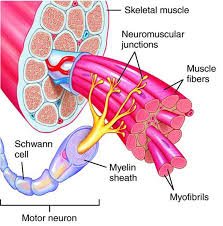Muscle Fibers in Swimming: Optimized Performance
Welcome back to "Mastering the Art of Specified Training in Swimming." After exploring USRPT in our first installment, we're now diving into the fascinating world of muscle fibers. How do they influence your swimming, and how can you train them for optimal performance?
The Myth: "Swimmers Are Either Sprinters or Distance Swimmers"
It's often said that sprinters are naturally endowed with more fast-twitch fibers, while distance swimmers have more slow-twitch fibers. While there's some truth here, it's not the whole story. Training plays a massive role in developing these fibers. Through specific training, you can enhance the efficiency of both fiber types, making you a versatile swimmer capable of excelling in various events.
Muscle fibers are not one-size-fits-all. They come in two primary types:
- Slow-Twitch (Type I): Think of these as your endurance experts. They're more efficient at using oxygen to generate fuel (ATP) for longer, sustained activities. They're crucial for long-distance swimming, helping you maintain pace without quick fatigue.
- Fast-Twitch (Type II): These are your sprinters. Type II fibers excel in quick, explosive actions but tire out faster. They're crucial in short, high-intensity bursts, like a 50m sprint.
Your training should reflect the demands of your events:
- For Sprinters: Focus on short, high-intensity sets. This approach targets your fast-twitch fibers, improving their ability to deliver explosive power when you need it most.
- For Distance Swimmers: Longer, steady-state swims are key. These sessions enhance the endurance capabilities of your slow-twitch fibers, allowing you to maintain a consistent pace over longer distances.
The Role of Specificity in Fiber Training
Remember the principle of 'specificity of motion' from our first post? It’s crucial here too. By training with the specific movements and pace of your race, you're directly targeting the muscle fibers most involved in those actions.
- Closer Look at Myelination
As we discussed previously, myelination is the process of developing a protective sheath around nerve cells, enhancing signal transmission. This process is vital for efficient movement. Consistent training in specific motions not only improves muscle fiber efficiency but also enhances myelination, leading to smoother, more coordinated movements in the water.
Practical Application in Your Training
Let's put this into perspective with an example. If you're training for a 200m freestyle event, your USRPT sessions might include sets like:
- 20 x 25m at your 200m race pace, focusing on maintaining form and speed throughout.
This set targets the muscle fibers and neural pathways involved in that specific event, enhancing both muscle and neurological efficiency.
Wrapping Up
Understanding and training your muscle fibers according to your swimming goals is key to success. Whether you lean towards sprints or endurance, a tailored approach to muscle fiber development can elevate your performance significantly.
Next up in our series, we'll tackle the crucial topic of nutrition in swimming. Stay tuned!



